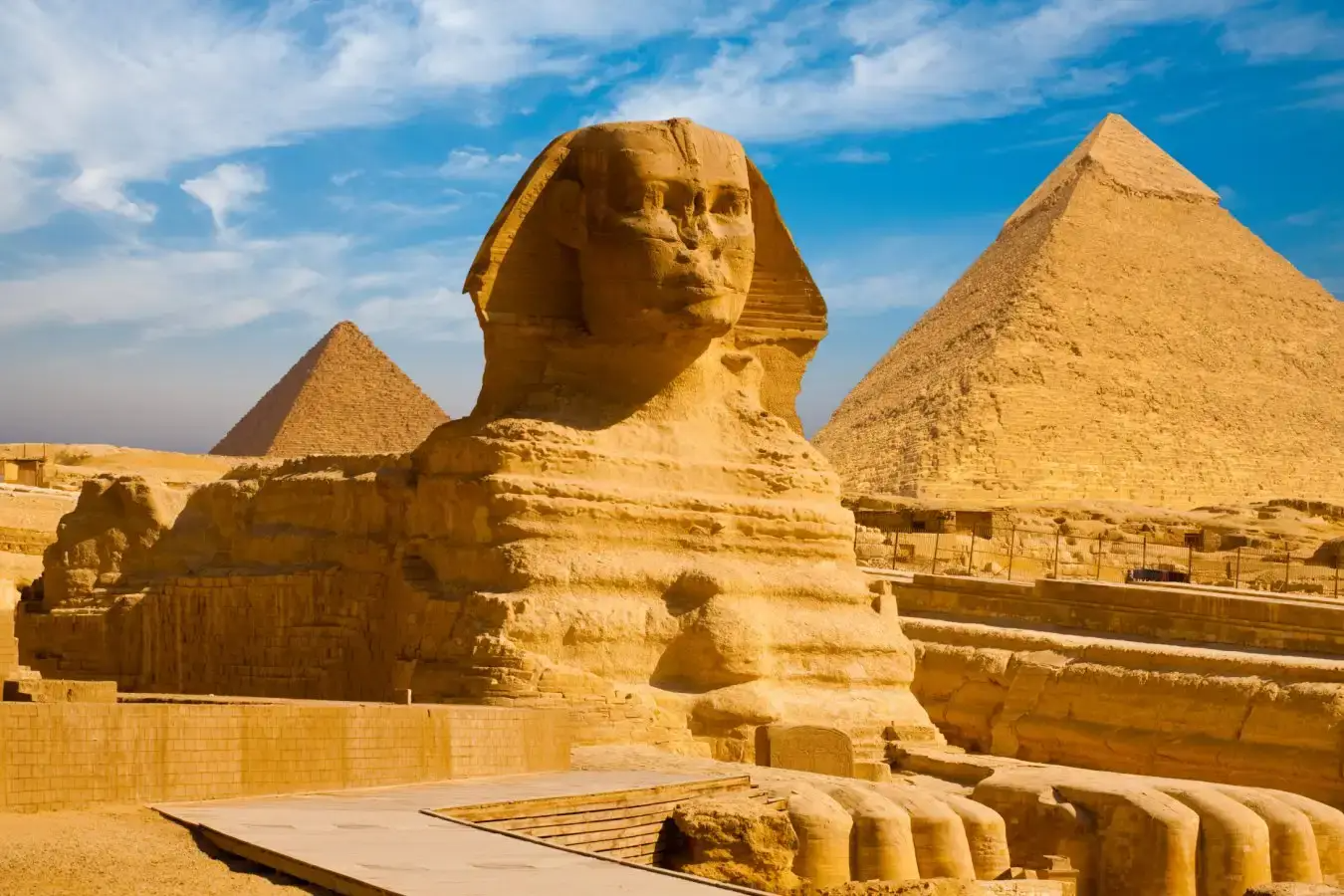Cultural, historical, adventure, and custom customized trips are just a few of the tours that Deluxe trips offer in Egypt and Jordan.

One of the symbols of Egypt most enduring, the Great Sphinx of Giza is a huge limestone statue carved more than 4,500 years ago on the Giza Plateau by the side of the Great Pyramids. The body of a crouching lion, the head of a man, believed to symbolize Pharaoh Khafre, this sculpture of one rock represents power and knowledge. Standing about 73 meters in length and 20 meters in height, the Sphinx is the largest and oldest monumental statue in Egypt that has intrigued generations, a masterpiece of art and engineering. The sphinx would be perfect for an Cairo City Breaks
The Great Sphinx of Giza was most likely built during Pharaoh Khafre's (c. 2558–2532 BCE) reign in Egypt's Fourth Dynasty. The Great Sphinx was chiseled out of the limestone on the level surface of the Giza Plateau and perhaps shows the image of Khafre himself. Although there are no inscriptions to confirm this, all archaeologists think it formed part of his larger funerary complex. A number of theories put it down as having been built by Khufu or Djedefre, but Khafre remains the most widely accepted based on style and location.
The Sphinx is widely believed by most scholars to have been built under Pharaoh Khafre during the Fourth Dynasty of the Old Kingdom. It was hacked out of a natural outcropping of limestone, using the more durable rock for the head and the less durable stone for the body. The monument would have been part of Khafre's larger funerary complex and stood guard to protect the processional way between his pyramid and the adjacent Valley Temple. Evidence suggests that the statue may have been once painted in vivid colors—red on the face and blue on the headdress—adding to its artistic appeal against the background of the desert.
The Sphinx was of deep spiritual significance in Egyptian society. The lion's body signified power, protection, and kingship power, while the human head—adorned with the nemes head cloth—signified royal intelligence along with divine kingship. The Sphinx also faced the rising sun and therefore had a deep connection with solar worship as well as the god Ra. It was later, particularly in the New Kingdom, though, that it was identified with Hor-em-akhet, or "Horus of the Horizon," a form of the solar deity. That association also rendered the statue a necropolis protector and a conductor to eternity.
The Great Sphinx has endured centuries of devastation, desecration, and neglect. Its missing nose has become a symbol of mystery itself, being occasionally unrealistically attributed to cannonballs fired by Napoleon's troops, but early illustrations already show the nose missing. The most widely accepted theory is that it was defaced in the 14th century by a Sufi fanatic. Conservation work dates back to ancient Egypt. Pharaoh Thutmose IV, in 1400 BCE, cleared sand from the Sphinx and placed the mythical Dream Stele between its paws. They even did some work there during Roman times and times more recent. Egyptologists and conservators restored worn-out blocks of limestone in the 20th century and installed protection systems against water degradation and environmental damage. It is preserved today by archaeological diggings and government initiatives for keeping this marvelous monument intact.
Aside from its physical structure, the Sphinx is a cultural icon whose influence is felt across the globe. It has come to represent a symbol of mystery, of ancient wisdom, and of the divide between the gods and mortals in art, literature, and legend. In Egypt itself, where the structure is called "Abu al-Hawl," or "Father of Terror," the monument continues to inspire awe. It has been the subject of scholarly research and speculative theories, with some suggesting there are concealed chambers or secreted patterns beneath. But its most enduring legacy is its survival—both as a mute witness to Egypt's rise and greatness, and as a monument beyond time.
The Sphinx sits in the middle of the Giza Necropolis, surrounded by the Great Pyramid of Khufu, the Pyramid of Khafre, and the Valley Temple. The Sphinx is most likely one of the most visited and studied archaeological monuments in Egypt. The Sphinx is a powerful image from a distance or close-up that provides an experience of spirituality and history. The surrounding desert, the ancient causeways, and the legends etched on nearby rockwalls all contribute to create the air of grandeur and wonder.
Discover now our answers to the most common questions that may come to your mind about tourism and trips to Egypt
Cultural, historical, adventure, and custom customized trips are just a few of the tours that Deluxe trips offer in Egypt and Jordan.
The Dead Sea, Petra in Jordan, the Pyramids of Giza, Luxor's historic temples, and many other famous sites can be expected to be explored with Deluxe Tours.
offer a hassle-free holiday, Deluxe Tours' packages generally include lodging, transport, meals, guided tours with experienced local experts, and entry fees to attractions.
Spring (March to May) and fall (September to November) offer the finest weather for sightseeing and outdoor activities, making those months the best times to visit Egypt and Jordan.
These two countries are close by, only a 1.5-hour flight apart, and when combined, offer a variety of distinctive experiences. We advise you to spend at least 12 days visiting both countries for a truly unforgettable experience
Combining the eclipse viewing with visits to historic sites like the Pyramids of Giza, the Valley of the Kings, and a Nile River cruise are highly recommended.
